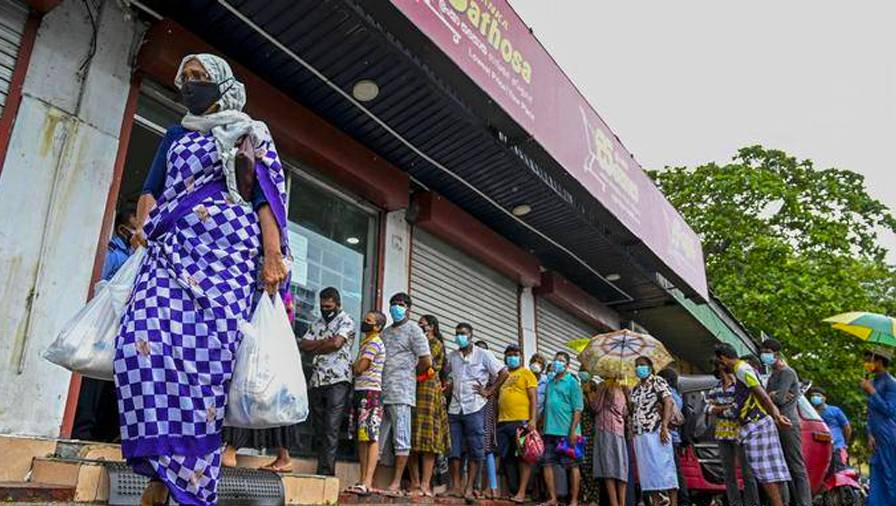Pesticide dilemma: Should health hinder food production?
Epidemiologist argues the case for better handling of toxic chemicals.
NBR columnist Nevil Gibson speaks with Fiona Rotherham
Epidemiologist argues the case for better handling of toxic chemicals.
NBR columnist Nevil Gibson speaks with Fiona Rotherham
Financial markets have delivered a withering blow to hopes of a positive economic outcome from the Covid-19 global pandemic.
Stocks entered a bear market and the bubble burst in highly speculative areas such as cryptocurrencies. The losses in wealth undid years of capital accumulation, while the longer-term effects were uncertain.
The blame game is being played out among central bankers, who kept interest rates too low for too long, and politicians, who are grappling with the highest outbreak of inflation and cost-of-living increases for decades after excessive fiscal largesse.
Economists who warned of the consequences are starting to be heard again, as the wider public learns to cope with the pandemic’s ‘post-elimination’ stage and life resumes some normality.
Sitting on the side lines are the public health officials, who orchestrated the responses to the pandemic, shutting down economies and closing borders until effective immunisation curbed the worst effects of the virus.
Among the many statistics, from ‘excess mortality’ through to GDP downturns, it is hard to judge whether the extreme public health measures were justified on a cost-benefit analysis.
Of course, efforts have been made. On the right, a study by a Steve Hanke-led think-tank, the Institute for Applied Economics, Global Health and the Study of Business Enterprise, was firmly negative about the public health measures.
No connection
Although the institute is based at the Johns Hopkins University in Boston, it is not connected with the famed medical school and is aligned with libertarian economic thinking. Another more recent meta-analysis by Casey Mulligan (Chicago) and Robert Arnott (California), for the National Bureau of Economic Research, reached similar conclusions.
Another point on the spectrum was presented by the local Royal Society’s science media centre in Wellington. It canvassed expert commentary on the two-year anniversary of the initial lockdown in March 2020.
Most of the experts were from the medical community and considered New Zealand’s experience was positive. The only economist in the survey, Professor Ilan Noy, of Victoria University, was cautious and balanced in his conclusion.
“… we were fortunate not only to have possibly the lowest excess mortality rate in the world, but also to avoid the health/wealth trade-off that we were worried about. There were, however, some significant costs, these were not evenly distributed, and not every policy decision was the right one.”

Professor llan Noy holds the chair in the economics of disasters and climate change at Victoria University.
The mistakes were not enunciated but Noy warned that more readiness was necessary in future.
More prepared
“We need to better prepare much better for the next pandemic by, first, analysing what we did wrong and what we did right in this pandemic, and start planning accordingly for the next one.”
That advice is shared by a leading public health figure, Neil Pearce, who observed the response from England, where for the past 11 years he has been professor of epidemiology and biostatistics at the London School of Hygiene and Tropical Medicine.
In New Zealand, he was director of Massey University’s Centre for Public Health Research and specialised in the study of pesticides, and dioxin in particular. He praised the Covid-19 response, saying it reflected the quality of public health officials despite what he described as the country’s “abysmal” history in environmental protection.
This failure is the subject of Pesticides and Health, published in the budget priced BWB Texts series, which is influential in government policy circles.
Pearce’s starting point is the handling of government investigations into the use and effects of dioxin in the spray chemicals used in the Vietnam War as a means clearing forest and vegetation, which provided cover for the communist guerrillas.

Dioxin was an ingredient in Agent Orange, used to clear vegetation in the Vietnam War.
Dioxin became contentious after that war; the US government was concerned with medical liability claims from veterans, while the victorious Vietnamese communists were worried dioxin concerns would affect exported products.
Neither government was interested in the wider health effects of dioxin, a naturally occurring chemical that has been used for decades in chlorination, leaded petrol and pesticides.
Paritutū affair
New Zealand’s agricultural production depended on dioxin’s weedkilling ability, but it became a public issue in the Paritutū affair, named after the Taranaki location of a chemical plant built in 1960.
Pearce was involved in many reviews, inquiries and interventions over the manufacturing of chemicals, their links to birth defects and cancer, and public fears that had arisen around the world since the publication of Rachel Carson’s Silent Spring in 1962.
While these issues were argued rationally among scientists, farmers, businesses and policymakers, occasionally they burst into the public arena with sensational media coverage.
Pearce devotes considerable space to a 2006 TV3 documentary that illustrated the worst features when the media deals with scientific and economic issues. He outlines distortions of official reports, some which he was partly responsible for; the use of random victims; and an ‘ambush’ interview with a health official who had nothing to do with the inquiry.
In addition, the TV crew was given access to a conference of experts, including overseas speakers, but none of this was used. Broadcasting regulators later upheld complaints of unfairness and lack of balance.

Professor Neil Pearce, of the London School of Hygiene and Tropical Health.
Pearce said the worst outcome was that the real issues of community exposure to dioxin were obscured, particularly the chemical plant’s workers who were most affected.
Bureaucratic squabbles
While the media’s impact may have been transitory, the bureaucratic squabbles over research funding are more telling, and not made public at the time. To an outsider, this part of the book is fascinating for its detail on the patch wars that engulf anything to do with science and health.
The use of chemicals in timber treatment is another public health issue that features bureaucratic and political interference. Forestry companies' data on their workers are hard to access, with government departments split between those who treat individuals’ illnesses and disease, and those concerned with occupational health and safety.
Pearce also wades into the use of glyphosate and whether it is carcinogenic. He sides with the International Agency for Research on Cancer as the arbiter, while countries with large agricultural industries, such as the US and New Zealand, take a less precautionary approach because of the dire economic consequences of reducing food production.
This highly contentious among scientists, not to mention economists. Pearce does not canvas any of the balancing effects that economic growth is necessary to maintain living standards.

Sri Lankans ran out of food when organic farming failed.
Sri Lanka’s recent plunge into green policies that forbade the use of fertilisers and chemicals in the name of organic farming is an example. The result was the complete breakdown of the country’s once thriving rice and horticultural production, leading to food riots and political crisis.
Progress opposed
Another area where greenies have opposed progress is the use of genetics to improve crops and control weeds or insects. This may be outside Pearce’s scope but they are relevant when he advocates the restoration of an independent body such as the Public Health Commission, abolished in 1995, and argues for greater recognition of the environmental aspects of occupational health rather than just injuries.
Epidemiologists are scarce, he contends, in the evaluation work of the Environmental Protection Authority, which vets hazardous substances, and he laments the decline of public trust in science and policymakers.
Some of this he blames on those who downplay the risks in modern science and medicine, while he also condemns “the bizarre and extreme beliefs of the Covid-19 deniers, the anti-vaxxers, or those who blame every health problem on pesticide exposure.”
The answer is more open discussion, rather than doubling down in defensive mode: “When scientists and policymakers say what they think the government wants them to say, rather than speaking openly and admitting when they are unsure about the evidence, the public quickly sees through this and their level of trust in government and scientists is reduced.”
This book is a valuable contribution to raising the level of that debate.
Pesticides and Health: How New Zealand fails in environmental protection, by Neil Pearce (BWB Texts)
Nevil Gibson is a former editor-at-large for NBR. He has contributed film and book reviews to various publications.
This is supplied content.
Sign up to get the latest stories and insights delivered to your inbox – free, every day.